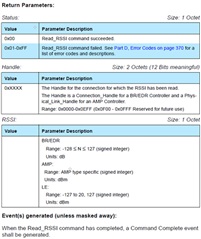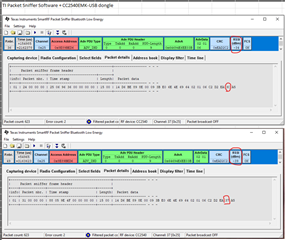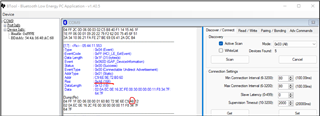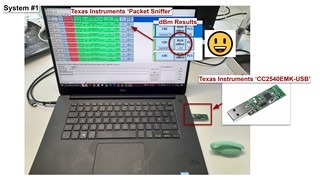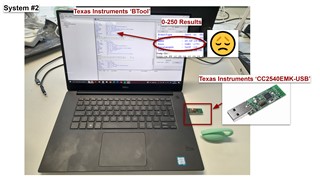Other Parts Discussed in Thread: CC2540,
(I've asked about this previously on the related thread, but am now certain that the original replies were incorrect, maybe because I should have specified we are using CC2540EMK-USB development board...)
We are using the CC2540EMK-USB development board to test the Bluetooth Low Energy signal strength of our products.
- If we use CC2540EMK-USB with the TI BTool application, the results are in 0-250 scale.
- If we use CC2540EMK-USB with the TI Packet Sniffer application, the results are in dBm units.
- We did some comparative tests: 221 ~ -31dbm, 197 ~ -42 dBm, 187 ~ -52 dBm, but these are approximate.
We need the ability to convert any RSSI result accurately between 0-250 scale and dBm units, so we need the exact conversion algorithm which TI are using in one of these apps. I have looked everywhere (datasheets, app user guides, other threads), but not found the real conversion algorithm, only some guesses on another thread.
I'm hoping for the actual conversion algorithm to be shared / confirmed by the TI software team please.



